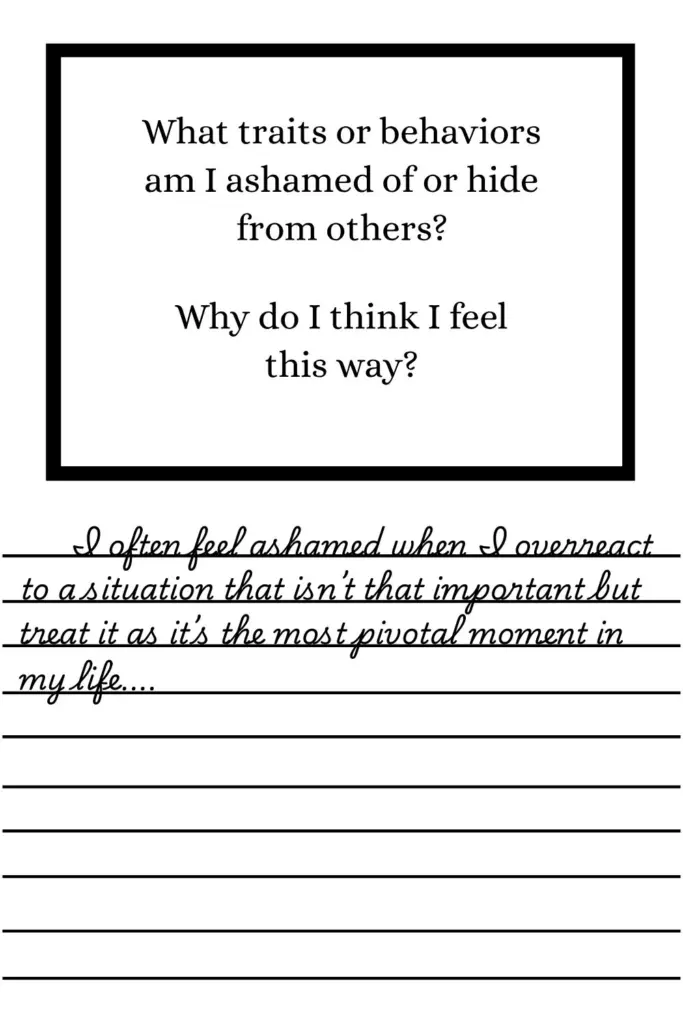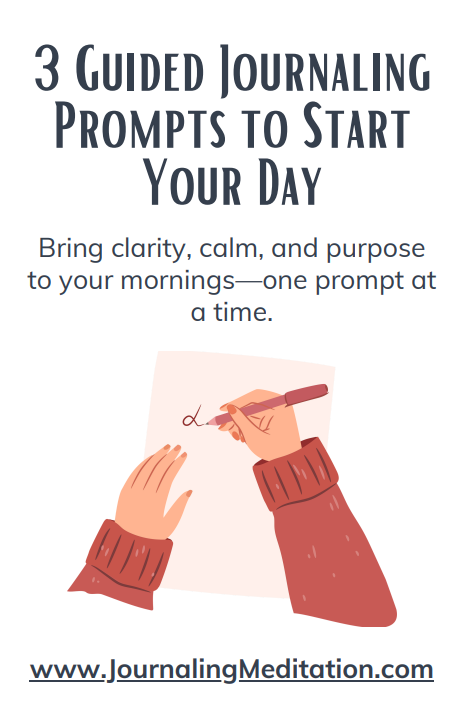
Shadow work is more than a self-help trend. It’s a powerful exercise rooted in psychology that can lead to lasting emotional healing. My shadow work journal PDF was created to guide you through this transformative process over 45 days, using thoughtful prompts that encourage deep imtrospection and emotional growth. Whether you’re brand new to shadow work or have been on your healing journey for years, this guided journal offers structure, insight, and space to explore the parts of yourself you may have been avoiding or even ashamed of.
What Is Shadow Work and Why It Matters

The Psychology Behind the Shadow
The term shadow self was first introduced by Swiss psychiatrist Carl Jung. It refers to areas of our selves such as traits, impulses and desires that we tend to either hide, suppress, or deny. This is often because they were deemed unacceptable in our early years. Over time, these hidden parts can create inner conflict, self-sabotage, and emotional triggers.
Shadow work is the intentional process of bringing these unconscious aspects into the light. Not to “fix” or get rid of them, but to understand and accept them. By facing your shadow self, you open the door to more authenticity, self-compassion and your true self power.
The Benefits of Shadow Work
Even though shadow work can be difficult and bring up uncomfortable emotions, there are some clear benefits of bringing these parts into the light.
- Self-awareness – Understand your emotional patterns and triggers.
- Emotional healing – Process and release unresolved wounds.
- Healthier relationships – Improve communication and boundaries.
- Authenticity – Live more in alignment with your values and needs.
Why Journal for Shadow Work?
Journaling as a Portal to the Mind
Journaling is a safe, private way to explore your inner world, without judgement. Writing your thoughts down makes them visible, which can help you see recurring patterns and hidden limiting beliefs that are hard to catch in regular self-reflection.
When you journal for shadow work, you’re creating a deep conversation with your subconscious. The act of answering carefully chosen prompts can reveal emotions and memories you may never have realized were influencing your behavior today.
The Science-Backed Benefits
Research supports the benefits of expressive writing. A landmark study by Pennebaker & Beall (1986) found that writing about emotional experiences can reduce stress and improve both mental and physical health. Neuroscience also shows that this kind of reflection supports neuroplasticity, helping you form new emotional responses over time.
The 45-Day Shadow Work Journal PDF
How I Designed It
When I created my 45-day shadow work journal PDF, I wanted it to feel approachable while still encouraging meaningful breakthroughs. Each day gives you:
- 2 thought-provoking prompts designed to help you explore a specific theme and expand on it.
- Lined space for journaling your reflections.
- A balance of deeper emotional work and self-care integration.
Why 45 Days?
While some shadow work journals are 7, 21 or even 30 days I chose 45 because it allows enough time for sustained self-exploration without rushing the process. And I wanted to make this exploration a little deeper, giving the practitioner a little more profound insight into themselves.
Inside the PDF – A Guided Tour
While the journal contains 45 unique prompts, here’s a small sample to give you a sense of the depth you can expect:
- “What traits or behaviors am I ashamed of or hide from others? Why do I think I feel this way?”
An opportunity to acknowledge hidden parts of yourself with honesty and curiosity. - “Who or what triggers feelings of guilt and shame in me? How can I release these emotions in a healthy way?”
A prompt to identify emotional triggers and create healthy coping skills. - “When have I struggled with self-respect in my relationships? How can I set healthy boundaries and respect my own needs and values?”
A powerful way to examine your boundaries and look over your emotional well-being.

Every prompt in the shadow work journal PDF is designed to help you go deep beneath shallow answers and uncover the root of what you’re feeling.
How to Use the Shadow Work Journal PDF Effectively
Create a Safe Environment

Shadow work can bring up strong emotions. Set aside quiet time in a space where you feel safe and grounded. You might want to keep calming tools nearby, like herbal tea, soft lighting, or a soothing playlist.
Emotional Safety Guidelines
If you ever feel overwhelmed, it’s okay to pause. You don’t have to answer every prompt in one sitting. Consider working alongside a therapist or trusted friend if you know certain topics will be triggering.
Best Practices for Lasting Change
- Pair your journaling with meditation to process your emotions more deeply and effectively.
- Review past entries periodically to track your growth.
- Allow yourself to write freely without self-editing. Honesty is key in shadow work.
Who This Journal Is For (and Who It’s Not For)
This shadow work journal PDF is perfect for:
- Anyone ready for honest self-reflection.
- People looking to identify and break emotional patterns.
- Those interested in pairing journaling with meditation for deeper healing.
It’s not recommended for those in acute emotional crisis without professional support, as shadow work can surface some intense memories and feelings.
How to Get Your Copy of the 45-Day Shadow Work Journal PDF
If you’re ready to explore your inner world with structure and guidance, you can grab your copy of my 45-Day Shadow Work Journal PDF today! It’s available on Amazon, or you can download it instantly and start your journey right away.
Want To Try Something Less Intense?
Frequently Asked Questions About the Shadow Work Journal PDF
Shadow work can feel uncomfortable or even intimidating if you’ve never tried it before. To help you better understand the process, and how my shadow work journal PDF fits in, here are answers to some of the most common questions people ask.
✒️ How to start journaling for shadow work?
Try starting by setting aside a quiet, uninterrupted space where you can reflect and write without distractions. Stick with a specific time each day to write, ideally when you’re relaxed but alert. Use structured prompts (like those in my 45-Day Shadow Work Journal PDF) to guide your thinking, and write honestly without worrying about grammar or style. Over time, you’ll uncover patterns, beliefs, and emotions that are often hidden beneath the surface.
📖 What is the Shadow Work Journal PDF?
The Shadow Work Journal PDF is a downloadable, guided journal containing daily prompts designed to help you explore your unconscious mind. My version spans 45 days, with prompts that touch on topics like hidden traits, emotional triggers, and boundary setting. Each prompt is followed by a follow-up prompt aimed at really getting into the issue and lined pages for personal reflection, creating a safe home for your self-discovery insights.
🛡️ Why do people avoid shadow work?
Many people avoid shadow work because it involves confronting uncomfortable truths about themselves. Sometimes it’s just easier to ignore painful memories or crappy traits than to face and deal with them. However, avoiding shadow work can keep us stuck in repeating patterns. When approached with patience and compassion, the process is a powerful tool for healing and personal growth.
💡 What do therapists think of the Shadow Work Journal?
Therapists often see value in shadow work journaling. It can be a complement to professional therapy, especially when it’s guided by thoughtful prompts. Writing can help clients process emotions between sessions, recognize patterns, and prepare for deeper conversations in therapy. However, most therapists recommend that individuals with significant trauma or mental health concerns work with a professional alongside journaling for emotional safety.

💬 Now I’d love to hear from you:
Have you ever tried shadow work journaling before? If so, what did you discover about yourself that surprised you the most? Share your experience in the comments. I’d love to learn from your journey!






